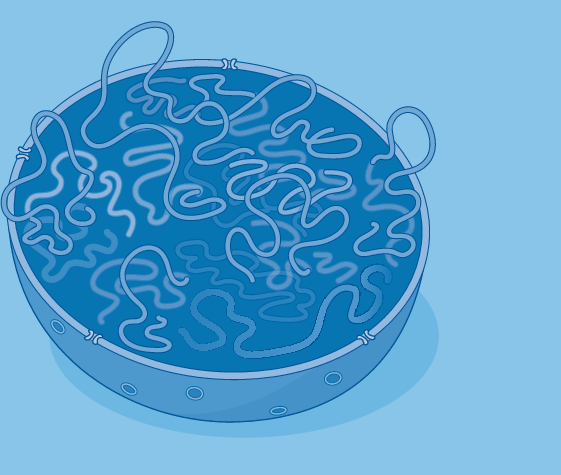Each of our cells usually has about 2 m (6 feet) of genomic DNA, which needs to be folded into a cell nucleus of approximately 10 μm in diameter. This level of packaging is equivalent to packing the circumference of Manhattan into a soccer ball. Is the 3D folding of DNA simply a geometrical necessity for the containment of long DNA inside cells, or does it also serve other functions such as transcription regulation?
It was hard to imagine that AraC could reach over this long distance along the linear genome and sterically affect RNA polymerase binding. So how could this long-range repression work? One idea the authors had was that the DNA may loop back, positioning the promoter and operator sequences next to each other in the 3D space. To test this idea, the authors inserted and deleted different lengths of DNA between the promoter and the operator, and found the repression strength would oscillate with a periodicity of around 11 bp of insertion or deletion. Based on the periodicity of the DNA helix, this observation led to a looping model whereby AraC faces the promoter in the wild-type case upon looping. The facing direction of AraC would be flipped (and its repression effect disrupted) when inserting half a helical turn of DNA (5 bp) and would be restored when inserting a full helical turn (11 bp).

